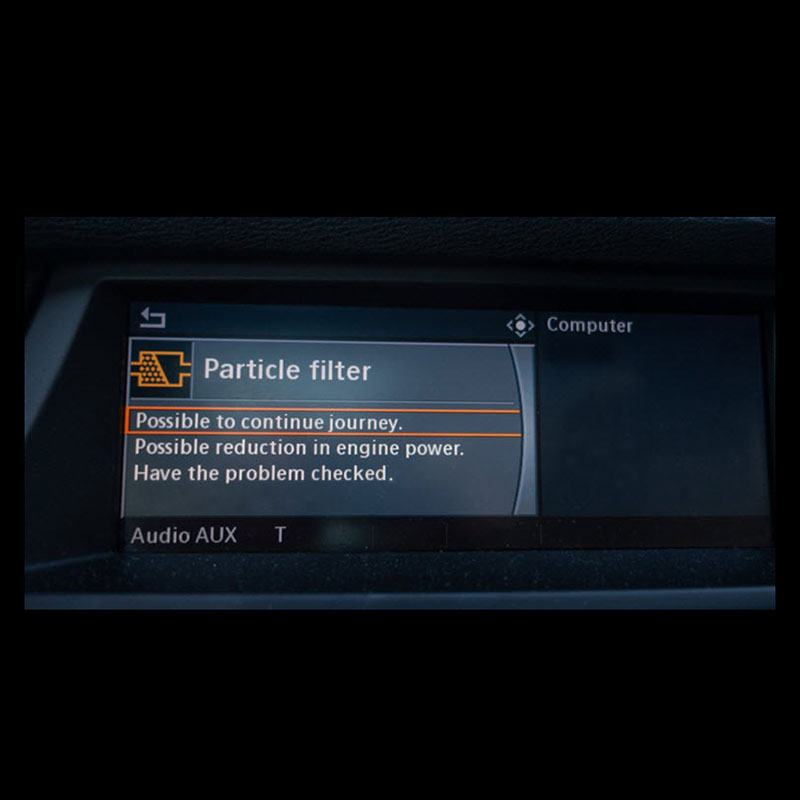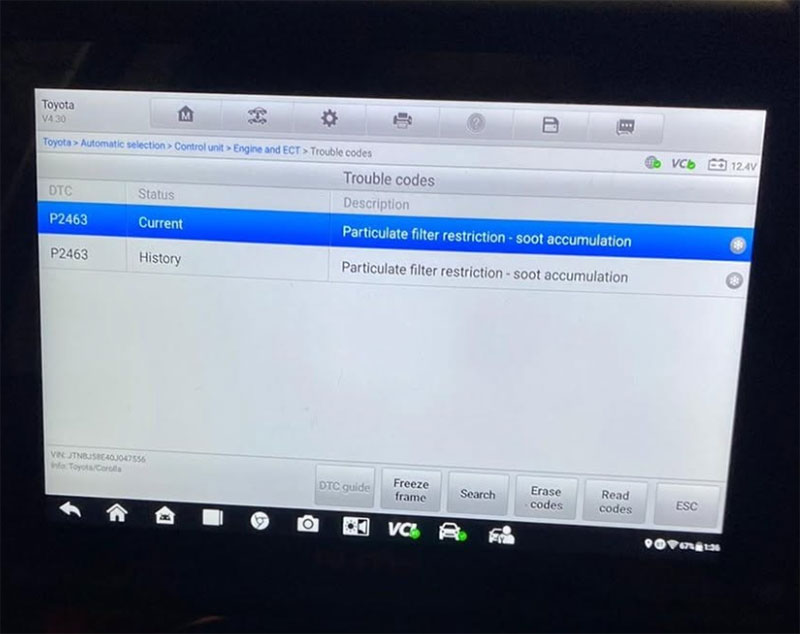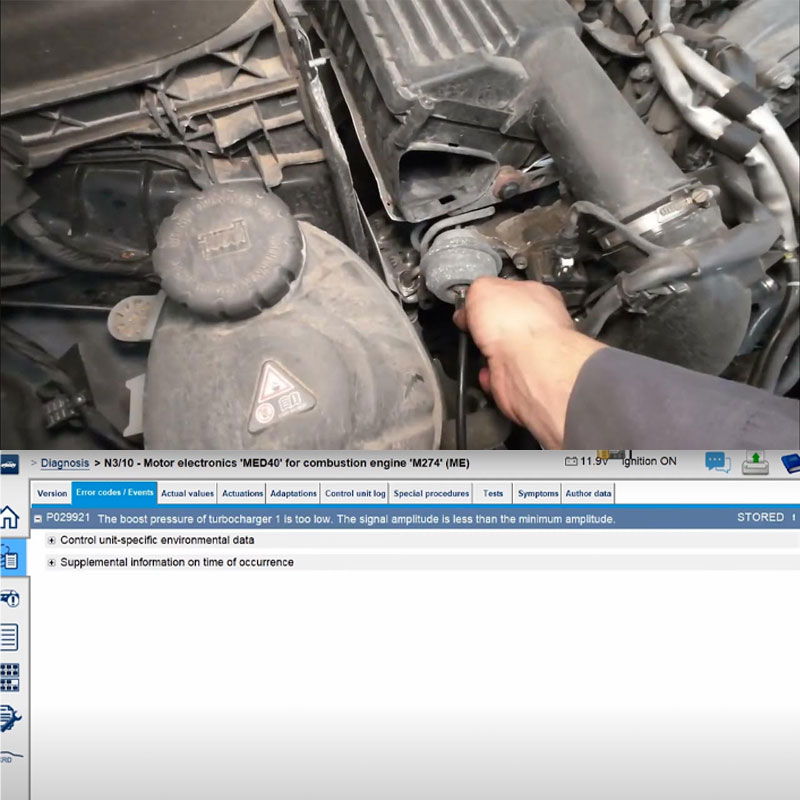

What Is The Mercedes Benz DPF Fault Code List?
Mercedes Benz Dpf Fault Code Lists can be confusing, but with the right information, diagnosing and resolving these issues becomes much easier. At autoexplain.com, we provide you with a comprehensive guide to understanding these codes, helping you get your Mercedes back on the road quickly and efficiently. Let’s dive into the details.
1. Understanding the Mercedes Benz DPF System
The Diesel Particulate Filter (DPF) is a crucial component in modern diesel engines, including those found in Mercedes Benz vehicles. Its primary function is to trap and remove harmful particulate matter (soot) from the exhaust gases, reducing emissions and contributing to cleaner air.
1.1. How the DPF Works
The DPF works by physically filtering exhaust gases. As the engine runs, soot particles accumulate within the filter. To prevent the filter from becoming clogged, a process called regeneration is initiated. During regeneration, the accumulated soot is burned off at high temperatures, converting it into ash and other less harmful substances. This process ensures the DPF remains functional and efficient.
1.2. The Importance of the DPF
The DPF is essential for meeting stringent emissions regulations. Without a properly functioning DPF, vehicles can release excessive amounts of particulate matter into the atmosphere, contributing to air pollution and potentially failing emissions tests. A well-maintained DPF ensures optimal engine performance, fuel efficiency, and environmental compliance.
1.3. Common Issues with the DPF
Several factors can lead to DPF issues, including:
-
Short trips: Frequent short trips prevent the DPF from reaching the high temperatures needed for regeneration.
-
Faulty sensors: Malfunctioning sensors can disrupt the regeneration process.
-
Engine problems: Issues like oil leaks or faulty injectors can cause excessive soot production, overloading the DPF.
-
Incorrect oil: Using the wrong type of engine oil can also lead to DPF problems.
2. Deciphering the Mercedes Benz DPF Fault Code List
When a DPF issue arises, the vehicle’s onboard diagnostic system (OBD) will generate a fault code. These codes provide valuable information about the nature of the problem, helping mechanics diagnose and resolve the issue effectively. Understanding the Mercedes Benz DPF diagnostic codes is critical for accurate repairs. Let’s explore some of the most common codes.
Here’s a table listing common Mercedes Benz DPF DTCs (Diagnostic Trouble Codes), their descriptions, and potential causes:
| Fault Code | Description | Potential Causes |
| P2002 | Diesel Particulate Filter Efficiency Below Threshold (Bank 1) | Clogged DPF, faulty DPF pressure sensor, exhaust leaks, malfunctioning oxygen sensor, issues with fuel injectors, problems with the engine control unit (ECU), incorrect engine oil, short trips preventing regeneration. |
| P2463 | Diesel Particulate Filter – Soot Accumulation | Frequent short trips, faulty DPF pressure sensor, issues with fuel injectors, EGR (Exhaust Gas Recirculation) valve problems, malfunctioning oxygen sensor, engine running rich, incorrect engine oil. |
| P2453 | Diesel Particulate Filter Differential Pressure Sensor Circuit Range/Performance | Faulty DPF pressure sensor, wiring issues, loose connections, exhaust leaks, blockage in the pressure sensor tubes, ECU problems, DPF partially clogged. |
| P244A | Diesel Particulate Filter Differential Pressure Too Low | Faulty DPF pressure sensor, exhaust leaks, blockage in the pressure sensor tubes, ECU problems, DPF damaged or cracked, incorrect sensor reading. |
| P2458 | Diesel Particulate Filter Regeneration Incomplete | Frequent short trips, issues with the regeneration system, faulty temperature sensors, malfunctioning glow plugs, problems with the fuel injectors, incorrect engine oil. |
| P2459 | Diesel Particulate Filter Regeneration Frequency | Frequent regeneration cycles due to excessive soot production, faulty DPF pressure sensor, issues with fuel injectors, EGR valve problems, engine running rich, incorrect engine oil. |
| P0401 | Exhaust Gas Recirculation Flow Insufficient Detected | Faulty EGR valve, blocked EGR passages, vacuum leaks, faulty EGR pressure sensor, problems with the EGR control circuit, issues with the engine management system (EMS). |
| P242F | Diesel Particulate Filter Restriction – Ash Accumulation | DPF nearing the end of its service life, excessive ash buildup due to prolonged use, lack of regular maintenance, problems with the regeneration process, incorrect engine oil. |
Note: The fault codes and descriptions may vary slightly depending on the specific Mercedes Benz model and year.

3. Troubleshooting Common Mercedes Benz DPF Problems
Now that we understand how to read fault codes, let’s delve into some common DPF problems and their troubleshooting steps.
3.1. DPF Clogging
Symptoms:
-
Reduced engine performance
-
Poor fuel economy
-
Check engine light illuminated
-
DPF regeneration warning light
Troubleshooting Steps:
-
Check DPF pressure sensor: Use a diagnostic tool to check the DPF pressure sensor readings. Compare the readings to the manufacturer’s specifications. Replace the sensor if it’s faulty.
-
Initiate forced regeneration: If the DPF is only partially clogged, you may be able to initiate a forced regeneration using a diagnostic tool. This process burns off the accumulated soot.
-
Inspect for exhaust leaks: Check the exhaust system for any leaks, as these can affect DPF performance. Repair any leaks as needed.
-
Clean or replace the DPF: In severe cases of clogging, the DPF may need to be cleaned or replaced. Consult with a mechanic for the best course of action.
3.2. DPF Pressure Sensor Issues
Symptoms:
-
Incorrect DPF pressure readings
-
Check engine light illuminated
-
DPF regeneration problems
Troubleshooting Steps:
-
Inspect the sensor: Visually inspect the DPF pressure sensor for any damage or corrosion.
-
Check wiring and connections: Check the wiring and connections to the sensor for any damage or looseness.
-
Test the sensor: Use a multimeter to test the sensor’s voltage and resistance. Compare the readings to the manufacturer’s specifications. Replace the sensor if it’s faulty.
-
Check pressure sensor tubes: Ensure the tubes connecting the sensor to the DPF are clear of any blockages.
3.3. Regeneration Problems
Symptoms:
-
Frequent regeneration cycles
-
Incomplete regeneration
-
Check engine light illuminated
Troubleshooting Steps:
-
Check temperature sensors: Ensure the temperature sensors are functioning correctly, as they are crucial for initiating regeneration.
-
Inspect glow plugs: Check the glow plugs, as they assist in raising the exhaust temperature during regeneration.
-
Check fuel injectors: Faulty fuel injectors can cause incomplete combustion and excessive soot production, leading to regeneration problems.
-
Verify engine oil type: Ensure the correct type of engine oil is being used, as incorrect oil can contribute to DPF issues.
3.4. EGR Valve Problems
Symptoms:
-
Reduced engine performance
-
Poor fuel economy
-
Increased emissions
-
Check engine light illuminated
Troubleshooting Steps:
-
Inspect the EGR valve: Visually inspect the EGR valve for carbon buildup or damage.
-
Test the EGR valve: Use a diagnostic tool to test the EGR valve’s operation.
-
Clean or replace the EGR valve: Clean the EGR valve if it’s clogged with carbon buildup. If the valve is damaged, it may need to be replaced.
4. How to Fix Mercedes DPF Faults
Fixing DPF faults on a Mercedes-Benz requires more than just clearing fault codes — it’s about identifying the root cause and applying the correct solution. Depending on your driving style, vehicle usage, and fault history, you may choose either a temporary fix (like regeneration or sensor replacement) or a permanent fix (DPF OFF).
Here’s a step-by-step guide on how to fix DPF-related faults effectively:
✅ Step 1: Read and Record the Fault Codes
Use a professional OBD2 scanner or diagnostic tool (like Xentry, Autel, Launch, or ISTA) to retrieve and record all current and stored DPF fault codes.
🛠️ Common Mercedes DPF codes include:P2002, 2631, 26F8, 2767, 16CF00, 25F6
This step helps determine if the issue is due to:
-
Blocked DPF
-
Sensor malfunction
-
Failed regeneration
-
Software error
✅ Step 2: Check Sensor Health and Live Data
Go to Live Data and monitor:
-
Differential pressure before/after DPF
-
Exhaust gas temperature (before, middle, and after DPF)
-
Soot load and ash content percentage
-
Regeneration status and request counters
🔎 If pressure or temperature sensors show abnormal values, this could trigger false DPF errors even if the filter isn’t fully clogged.
✅ Step 3: Attempt Forced Regeneration
If sensor values and soot levels are within a safe range, perform a forced regeneration using diagnostic software. This raises exhaust temperature to burn off excess soot.
🟢 Ideal for:
-
Moderate soot load (below 80%)
-
No mechanical DPF damage
🔴 Avoid if:
-
Ash content is high (above 90%)
-
Car enters limp mode during regen
-
You’ve already attempted regeneration multiple times without success
✅ Step 4: Replace Faulty Components (If Any)
If sensors or glow plugs are confirmed faulty, replace them before attempting regeneration again. Also, inspect the EGR valve and turbo for carbon buildup that might be causing higher soot levels.
🧰 Common parts to check:
-
Differential pressure sensor
-
Exhaust gas temperature sensors
-
Glow plugs or relay
-
Engine oil (must be low-SAPS spec)
✅ Step 5: Clear Fault Codes and Test Drive
After completing regeneration or repairs, clear all DTCs and perform a test drive at highway speeds for at least 15–20 minutes to monitor regeneration behavior and ensure the fault doesn’t reappear.
5. What If DPF Faults Keep Coming Back?
If your DPF-related fault codes reappear frequently despite multiple regenerations, cleanups, or part replacements — your filter may be beyond recovery. In such cases, you have three options:
5.1. 🔁 DPF Replacement
-
Very expensive (can cost $1,500–$3,000+)
-
Does not prevent the same issue from happening again
-
Still requires sensors and regeneration management
5.2. 🧼 DPF Cleaning (On-car or Off-car)
-
Involves chemical flushing or ultrasonic bath
-
Temporary solution, works best if ash buildup is minimal
-
May still require regeneration afterward
5.3. ✅ DPF OFF – Permanent Software Solution
If your vehicle is for off-road, racing, or export use, the most reliable fix is to disable the DPF function in the ECU using specialized software. This removes all DPF-related logic, sensors, and regen strategies, preventing the fault codes from ever returning.
Please note:
=> You may also like: AutoExplain Turning DPF & EGR Off Service
🧠 Final Advice
Fixing DPF faults is not just about deleting codes. It’s about:
-
Understanding why the DPF failed
-
Choosing the right solution based on your usage
-
Making sure your fix won’t cause more problems later
And when you’re ready for a clean, professional DPF OFF solution, you can trust the experts at AutoExplain.
Conclusion
If you’re driving a Mercedes diesel and encountering DPF-related fault codes like P2002, 2631, 26F8, or 16CF00, it’s a clear sign your Diesel Particulate Filter system is struggling — whether due to excessive soot buildup, sensor failure, or interrupted regeneration.
Ignoring these issues can lead to reduced performance, higher fuel consumption, and costly repairs. While some faults can be temporarily resolved through regeneration or sensor replacement, a permanent solution like DPF OFF (software delete) is often the most efficient route — especially for off-road or export vehicles.
🚀 Get Expert Help – Anytime, Anywhere
At AutoExplain, we provide Mercedes DPF OFF solutions that are safe, effective, and tailored to your specific engine and ECU. Whether you’re running a CRD2, CRD3, or MD1 ECU, we’ve got you covered with:
-
✅ Fully tested & verified DPF OFF files
-
✅ Customized tuning based on your ECU ID
-
✅ Step-by-step live guidance
-
✅ 24/7 technical support — even on weekends
📩 Have a question or ready to fix your DPF problem?
Reach out to us today via:
📱 WhatsApp: +84 967 469 410
📧 Email: [email protected]
Let AutoExplain help you get your Mercedes back to peak performance — anytime you need it.

65535 Audi Fault Code: Expert Solutions and Fixes
Audi A3 Trouble Code 00796: Diagnosis, Solutions, and Expert Insights
Audi DTC 16347:014 – Expert Diagnosis and Solutions

Josh William
Josh William is a seasoned automotive expert and technical writer at AutoExplain. With a background as an automotive technician, he brings hands-on experience and deep industry knowledge to his writing.





3 Responses